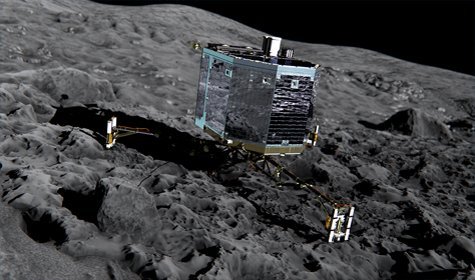The Philae probe which made international news for landing on a comet, a mission that started 10 years ago, has gone dormant. The European Space Agency (ESA) reports that the batteries are depleted on the probe and not enough sunlight is available to recharge causing the probe to go into “idle mode” for a potentially long silence.
 “Prior to falling silent, the lander was able to transmit all science data gathered during the First Science Sequence,” says DLR’s Stephan Ulamec, Lander Manager, who was in the Main Control Room at ESOC tonight.
“Prior to falling silent, the lander was able to transmit all science data gathered during the First Science Sequence,” says DLR’s Stephan Ulamec, Lander Manager, who was in the Main Control Room at ESOC tonight.
“This machine performed magnificently under tough conditions, and we can be fully proud of the incredible scientific success Philae has delivered.”
Instead of landing on its planned target, Philae took a dramatic double bounce into the shadows of the comet, where only a tiny bit of sunlight could reach its solar panels. The battery, which lasts for two and a half days, was intended to power Philae during its first planned sequence of data collection. After the battery ran out, Philae was to rely on the sun.
Despite Philae’s precarious position on a cliff, it managed to collect all the data that mission controllers had planned for—images, information on the comet’s chemical composition and its surface properties, for example. The spacecraft even managed to drill into the comet’s surface. Mission controllers also rotated Philae 35 degrees in the hopes of getting its solar panels in a more favorable position. It remains to be seen whether the maneuver will pay off.
For more information on the Philae Lander, you can read the ESA’s Blog HERE.


![Texas Victory: Federal Judge Rules $1.7 Trillion Spending Bill Unconstitutional, Backs Ken Paxton’s Challenge [VIDEO]](https://i2.wp.com/i.ytimg.com/vi/Rn5RkU0QvRs/maxresdefault.jpg?resize=440,264)


![Record-Breaking Border Encounters Amid Worsening Crisis [VIDEO]](https://i3.wp.com/austincountynewsonline.com/wp-content/uploads/2022/12/border-crisis.jpg?resize=440,264)
